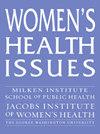Exploring Consumer Preferences for Pharmacy Provision of Mifepristone in the Human-centered Design Discovery Phase
IF 2.5
2区 医学
Q2 PUBLIC, ENVIRONMENTAL & OCCUPATIONAL HEALTH
引用次数: 0
Abstract
Objective
We used human-centered design to explore preferred consumer experiences for obtaining mifepristone for medication abortion care from a pharmacy.
Methods
We conducted a two-part virtual workshop series with the same 10 participants in March and April of 2022 to initiate the discovery phase of a human-centered design process. Most participants were residents of Illinois and all participants had uteruses and had either sought abortion care or supported someone who had. Co-developed and co-facilitated with a local abortion fund, workshops engaged participants to provide formative data for the development of recommendations for community health center clinicians and pharmacists. A simulated medication abortion care counseling session grounded group activities and discussions that explored the experience of filling a medication abortion prescription at a pharmacy or by mail. Data were analyzed for key themes and recommendations. Qualitative data were collected from the workshops. Data analysis was conducted in three iterative, parallel stages: 1) virtual whiteboard results from both workshops were analyzed deductively through spreadsheets and visualizations; 2) close reading was conducted for workshop transcripts and participant evaluations; and 3) document analysis was used to triangulate data across formats. Data were discussed periodically among the research team until consensus was reached.
Results
Five primary categories of questions and preferences emerged from workshop data concerning: logistics, privacy, cost, pharmacist refusal, and follow-up care. Researchers found that participants desired certain questions and concerns to be answered by specific provider types. Participants indicated a desire for further research and opportunities that prioritize lived experience and use storytelling and/or design methods to collect data.
Conclusions
Despite existing patient-oriented medication abortion resources, there is a need for patient resources to support pharmacy dispensing, and a corresponding need for clinician and pharmacist resources. These can help in-person and mail-order pharmacy dispensing to be as consumer friendly as possible.
在以人为本的设计探索阶段,探索消费者对药房提供米非司酮的偏好。
目的我们采用以人为本的设计来探索消费者从药房获得米非司酮用于药物流产护理的首选体验:2022 年 3 月和 4 月,我们与同样的 10 名参与者开展了由两部分组成的系列虚拟研讨会,以启动以人为本的设计流程的探索阶段。大多数参与者都是伊利诺伊州的居民,所有参与者都有子宫,并且寻求过人工流产护理或支持过人工流产护理的人。研讨会与当地一家人工流产基金共同开发并共同主持,参与者参与其中,为社区医疗中心临床医生和药剂师提供形成性数据,以制定建议。通过模拟药物流产护理咨询会议,开展小组活动和讨论,探讨在药房或通过邮件开具药物流产处方的经验。对数据进行了分析,以确定关键主题并提出建议。从研讨会中收集了定性数据。数据分析分三个并行的迭代阶段进行:1) 通过电子表格和可视化对两次研讨会的虚拟白板结果进行演绎分析;2) 对研讨会记录和参与者评价进行精读;3) 使用文档分析对不同格式的数据进行三角测量。研究小组定期讨论数据,直至达成共识:从研讨会的数据中得出了五大类问题和偏好,分别涉及:后勤、隐私、成本、药剂师拒绝以及后续护理。研究人员发现,参与者希望由特定类型的医疗服务提供者来回答某些问题和疑虑。参与者表示希望进一步开展研究,并希望有机会优先考虑生活经验,使用讲故事和/或设计方法来收集数据:尽管已有面向患者的药物流产资源,但仍需要患者资源来支持药房配药,同时也需要相应的临床医师和药剂师资源。这些资源可帮助现场和邮购药房配药尽可能方便消费者。
本文章由计算机程序翻译,如有差异,请以英文原文为准。
求助全文
约1分钟内获得全文
求助全文
来源期刊

Womens Health Issues
Multiple-
CiteScore
4.50
自引率
6.20%
发文量
97
审稿时长
32 days
期刊介绍:
Women"s Health Issues (WHI) is a peer-reviewed, bimonthly, multidisciplinary journal that publishes research and review manuscripts related to women"s health care and policy. As the official journal of the Jacobs Institute of Women"s Health, it is dedicated to improving the health and health care of all women throughout the lifespan and in diverse communities. The journal seeks to inform health services researchers, health care and public health professionals, social scientists, policymakers, and others concerned with women"s health.
 求助内容:
求助内容: 应助结果提醒方式:
应助结果提醒方式:


